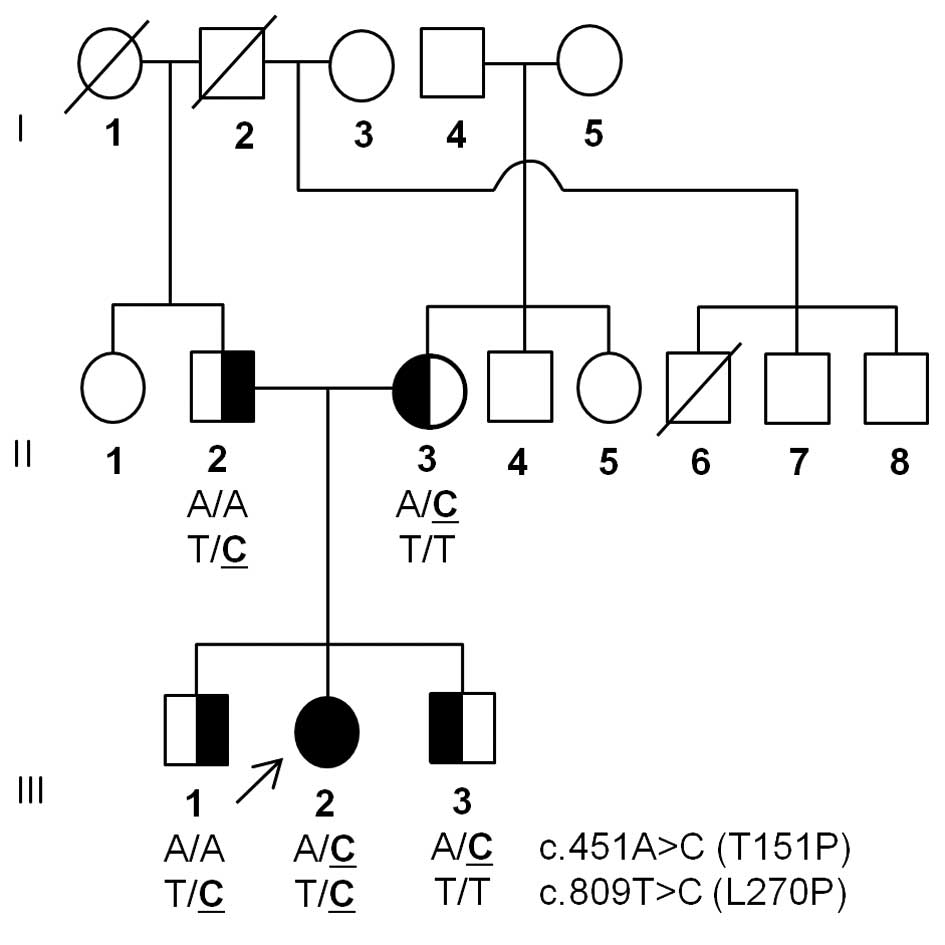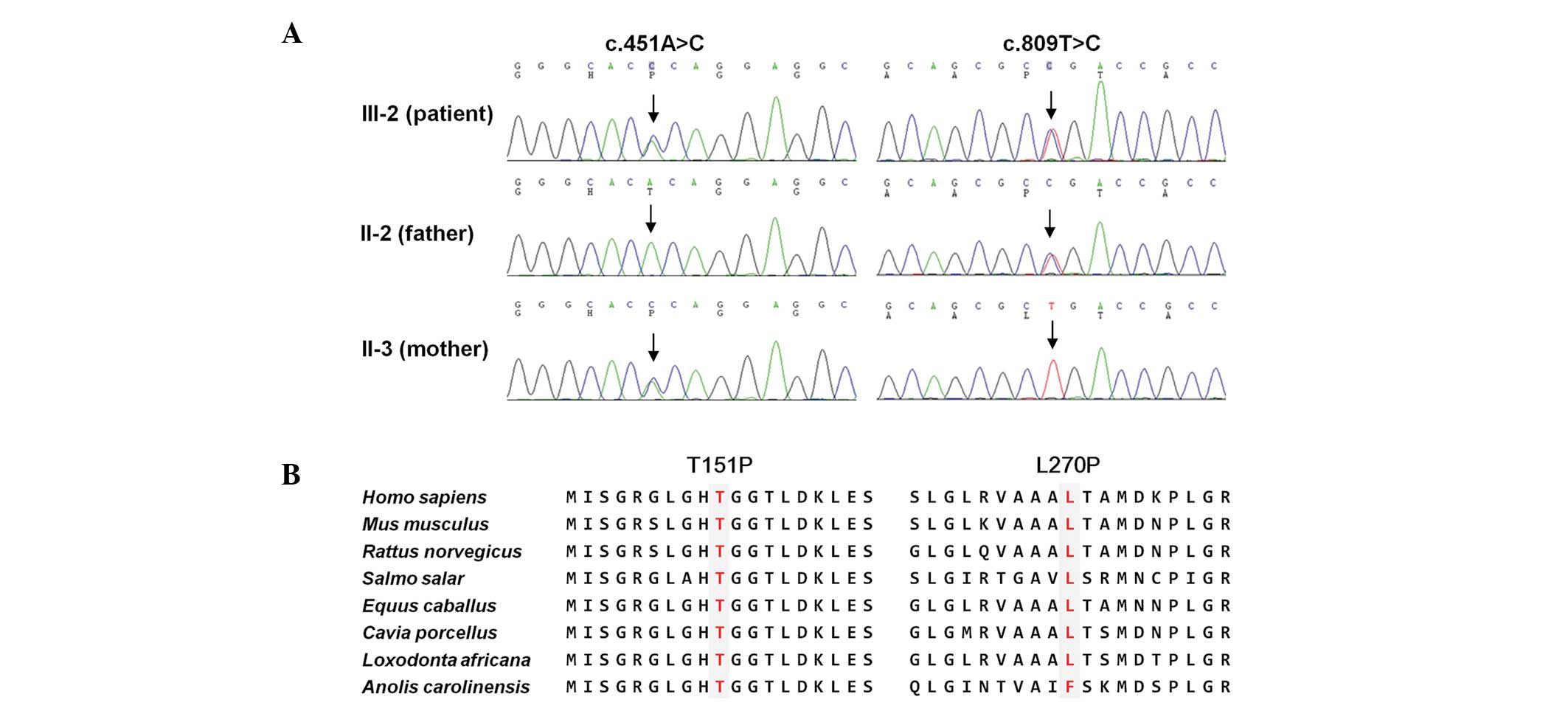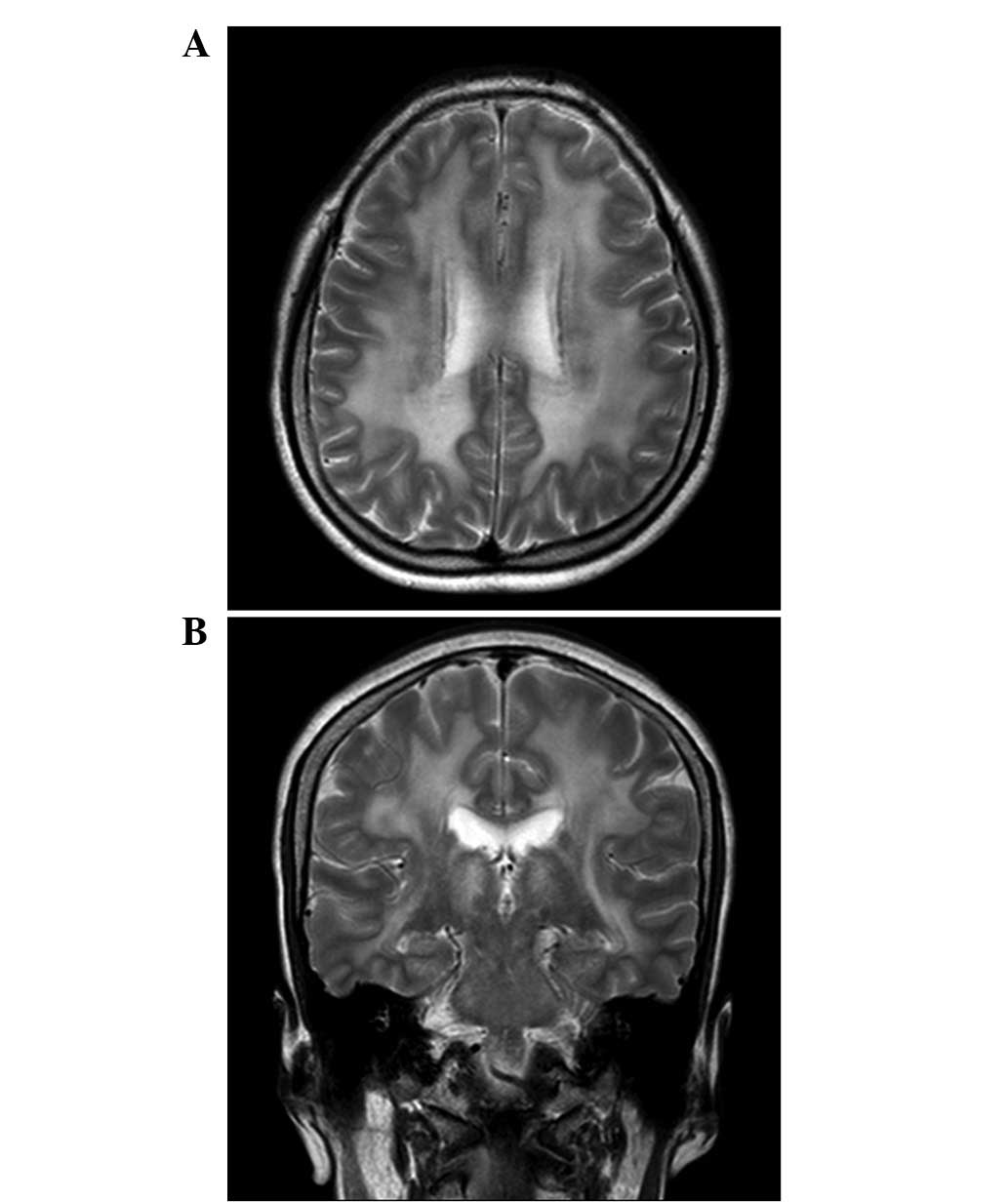|
1
|
Spelbrink JN, Li FY, Tiranti V, et al:
Human mitochondrial DNA deletions associated with mutations in the
gene encoding Twinkle, a phage T7 gene 4-like protein localized in
mitochondria. Nat Genet. 28:223–231. 2001. View Article : Google Scholar : PubMed/NCBI
|
|
2
|
Hirano M, Nishigaki Y and Martí R:
Mitochondrial neurogastrointestinal encephalomyopathy (MNGIE): a
disease of two genomes. Neurologist. 10:8–17. 2004. View Article : Google Scholar : PubMed/NCBI
|
|
3
|
Spinazzola A and Zeviani M: Disorders of
nuclear-mitochondrial intergenomic signaling. Gene. 354:162–168.
2005. View Article : Google Scholar : PubMed/NCBI
|
|
4
|
Suomalainen A and Isohanni P:
Mitochondrial DNA depletion syndromes - many genes, common
mechanisms. Neuromuscul Disord. 20:429–437. 2010. View Article : Google Scholar : PubMed/NCBI
|
|
5
|
Nishino I, Spinazzola A and Hirano M:
Thymidine phosphorylase gene mutations in MNGIE, a human
mitochondrial disorder. Science. 283:689–692. 1999. View Article : Google Scholar : PubMed/NCBI
|
|
6
|
Vissing J, Ravn K, Danielsen ER, et al:
Multiple mtDNA deletions with features of MNGIE. Neurology.
59:926–929. 2002. View Article : Google Scholar : PubMed/NCBI
|
|
7
|
Van Goethem G, Schwartz M, Löfgren A, et
al: Novel POLG mutations in progressive external ophthalmoplegia
mimicking mitochondrial neurogastrointestinal encephalomyopathy.
Eur J Hum Genet. 11:547–549. 2003.
|
|
8
|
Shaibani A, Shchelochkov OA, Zhang S, et
al: Mitochondrial neurogastrointestinal encephalopathy due to
mutations in RRM2B. Arch Neurol. 66:1028–1032. 2009. View Article : Google Scholar : PubMed/NCBI
|
|
9
|
Kollberg G, Darin N, Benan K, et al: A
novel homozygous RRM2B missense mutation in association with severe
mtDNA depletion. Neuromuscul Disord. 19:147–150. 2009. View Article : Google Scholar : PubMed/NCBI
|
|
10
|
Naviaux RK and Nguyen KV: POLG mutations
associated with Alpers’ syndrome and mitochondrial DNA depletion.
Ann Neurol. 55:706–712. 2004.
|
|
11
|
Tyynismaa H, Ylikallio E, Patel M, Molnar
MJ, Haller RG and Suomalainen A: A heterozygous truncating mutation
in RRM2B causes autosomal-dominant progressive external
ophthalmoplegia with multiple mtDNA deletions. Am J Hum Genet.
85:290–295. 2009. View Article : Google Scholar
|
|
12
|
Gamez J, Ferreiro C, Accarino ML, et al:
Phenotypic variability in a Spanish family with MNGIE. Neurology.
59:455–457. 2002. View Article : Google Scholar : PubMed/NCBI
|
|
13
|
Szigeti K, Wong LJ, Perng CL, et al: MNGIE
with lack of skeletal muscle involvement and a novel TP splice site
mutation. J Med Genet. 41:125–129. 2004. View Article : Google Scholar : PubMed/NCBI
|
|
14
|
Hirano M, Lagier-Tourenne C, Valentino ML,
Martí R and Nishigaki Y: Thymidine phosphorylase mutations cause
instability of mitochondrial DNA. Gene. 354:152–156. 2005.
View Article : Google Scholar : PubMed/NCBI
|
|
15
|
Martí R, Verschuuren JJ, Buchman A, et al:
Late-onset MNGIE due to partial loss of thymidine phosphorylase
activity. Ann Neurol. 58:649–652. 2005.PubMed/NCBI
|
|
16
|
Massa R, Tessa A, Margollicci M, et al:
Late-onset MNGIE without peripheral neuropathy due to incomplete
loss of thymidine phosphorylase activity. Neuromuscul Disord.
19:837–840. 2009. View Article : Google Scholar : PubMed/NCBI
|
|
17
|
Libernini L, Lupis C, Mastrangelo M, et
al: Mitochondrial neurogastrointestinal encephalomyopathy: novel
pathogenic mutations in thymidine phosphorylase gene in two Italian
brothers. Neuropediatrics. 43:201–208. 2012. View Article : Google Scholar
|
|
18
|
Ishikawa F, Miyazono K, Hellman U, et al:
Identification of angiogenic activity and the cloning and
expression of platelet-derived endothelial cell growth factor.
Nature. 338:557–562. 1989. View
Article : Google Scholar : PubMed/NCBI
|
|
19
|
Bakker JA, Schlesser P, Smeets HJ,
Francois B and Bierau J: Biochemical abnormalities in a patient
with thymidine phosphorylase deficiency with fatal outcome. J
Inherit Metab Dis. 2010:Feb 12–2010.(Epub ahead of print).
|
|
20
|
Haraguchi M, Tsujimoto H, Fukushima M, et
al: Targeted deletion of both thymidine phosphorylase and uridine
phosphorylase and consequent disorders in mice. Mol Cell Biol.
22:5212–5222. 2002. View Article : Google Scholar : PubMed/NCBI
|
|
21
|
López LC, Akman HO, García-Cazorla A, et
al: Unbalanced deoxynucleotide pools cause mitochondrial DNA
instability in thymidine phosphorylase-deficient mice. Hum Mol
Genet. 18:714–722. 2009.PubMed/NCBI
|
|
22
|
Tamura K, Peterson D, Peterson N, Stecher
G, Nei M and Kumar S: MEGA5: molecular evolutionary genetics
analysis using maximum likelihood, evolutionary distance, and
maximum parsimony methods. Mol Biol Evol. 28:2731–2739. 2011.
View Article : Google Scholar
|
|
23
|
Ingman M and Gyllensten U: mtDB: Human
Mitochondrial Genome Database, a resource for population genetics
and medical sciences. Nucleic Acids Res. 34:D749–D751.
2006.PubMed/NCBI
|
|
24
|
Tanaka M, Takeyasu T, Fuku N, Li-Jun G and
Kurata M: Mitochondrial genome single nucleotide polymorphisms and
their phenotypes in the Japanese. Ann NY Acad Sci. 1011:7–20. 2004.
View Article : Google Scholar : PubMed/NCBI
|
|
25
|
Hagiwara K, Stenman G, Honda H, et al:
Organization and chromosomal localization of the human
platelet-derived endothelial cell growth factor gene. Mol Cell
Biol. 11:2125–2132. 1991.PubMed/NCBI
|
|
26
|
Asai K, Nakanishi K, Isobe I, et al:
Neurotrophic action of gliostatin on cortical neurons. Identity of
gliostatin and platelet-derived endothelial cell growth factor. J
Biol Chem. 267:20311–20316. 1992.PubMed/NCBI
|












